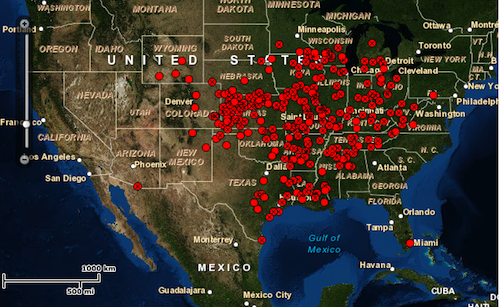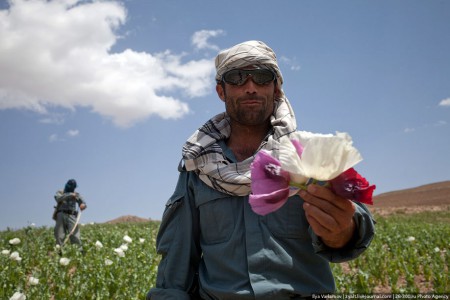BBC Radio 4’s Farming Today this morning had visited the John Innes Centre to hear all about superwheats, promising yields of 15 t/ha as opposed to the current (UK) average of about 8t/ha. Intrepid reporter Anna Hill couldn’t supress a little chuckle as she gazed in awe at 5 foot (150 cm) tall plants towering over her, each ear enclosed in a little plastic bag.
The John Innes Centre is looking in wheats from thousands of years ago for traits to feed the 9 billion, traits that might have been left behind because they weren’t incorporated into the pool when modern wheat breeding began.
There’s a lot there to take issue with. The researcher ((John Alford? Anna Hill wasn’t too clear, and his name doesn’t seem to be anywhere on the Farming Today website.)) described landraces as having developed “almost naturally,” which rather downplays the role of farmers in both selecting and maintaining the characteristics of their landraces. It also gives the lie to the idea that these landraces are thousands of years old. I don’t know exactly when they were collected, but I’d be willing to bet is was less than 100 years ago, at most.
Then there’s the whole idea of going back to landraces in search of forgotten traits as if this was some Eureka-style breakthrough in breeder thinking. John Innes’ breeders are hardly the first to have thought of this. In fact CIMMYT went one better, and actually recreated modern wheat by re-hybridizing the parental species, broadening considerably the genetic base for breeders.
(Those breeders, by the way, have just published a summary of the yield gains in their elite spring wheat programme over the past 15 years (1995-2009). Average annual gains across 919 environments in 69 countries are of the order of 0.65%. Of course, that’s no reason to be complacent — the trend may be slowing — but still … ((I had wanted to quote the avertage yield in all those trials, but CIMMYT chooses to publish publicly-funded research behind a paywall. It’s a scandal. If you can get the figure, please share.)))
And finally, the bit that really made me squirm was when Anna Hill put Alford (if it was he) on the spot by asking what traits he was looking for, and whether he had found anything, and the poor researcher was left to utter pleasantries about transport systems, and leaf area, and robust plants and disease resistance and photosynthesis and “it’s very complicated”. It all seemed to reflect a press release in search of a story.
Anyway, listen for yourself.

